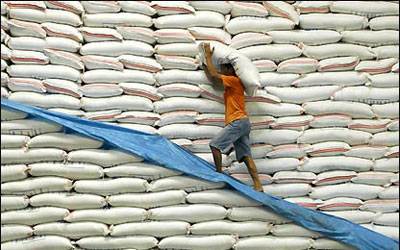Industrialized countries guard their exports very jealously. South Korea’s exports had been shrinking for the past six months mainly on the back of a sluggish global demand and low oil prices, but still the South Korean government announced some key measures last week to ensure that its exports once again get on an upward trajectory despite these global realities. In Japan we see that the real underlying thrust of Abenomics is nothing but to resurrect Japanese exports by spurring industrial growth and jobs at home. Shunning global outcry over a consistently undervalued Yuan/Renminbi, China has in fact further devalued its currency in recent months to see to it that its export do not significantly get affected amidst a slowing Chinese economy. And last but not least, ask the Syriza leadership and they will tell you that Greece’s primary problem is that it can no longer produce the exportable surplus that can take its economy out of its present mess. Closer to home the situation is even more alarming from the Pakistani-exports’ perspective, since unlike us our regional neighbors and competitors, Bangladesh, India, Sri Lanka and Myanmar, have all posted a year-on-year growth in their respective national exports.
Pakistan on the other hand has shown a decline in its exports for the second year now (both PML-N government years). FY 2015 closed on a dismal note for the textile exports of the country which posted a decline of minus 4% month-on-month to clock at USD 1.08 billion, taking total exports in FY 2015 to USD 13.47 billion against USD 13.72 billion it clocked in FY 2014, down 1.8% year-on-year. Major declines were seen in the cotton yarn, raw cotton and other non-value added categories, which posted negative growth of between 8% to 11%, on a year-on-year basis. Key reasons being cited by the government for this decline in our exports are:
1. Collapse in cotton commodity prices which resulted in lower retention rates across the value chain,
2. Discontinuation of Chinese yarn procurement,
3. Challenges in the gas and power sectors, and
4. An on-going financial crisis and recession in the Euro-Zone.
According to the officials of the Ministry of Commerce, going forward, the recovery in exports will remain contingent to: (i) Improvement in demand from European Union (EU) (ii) Higher retention rates amid recovering cotton prices and (iii) An improved energy and power supply position to the industry. What it fails to explain is that not only quite a few of these challenges have been prevalent in Pakistan since a number of years now, but also that most of them are being faced by our neighborly competitors as well who instead have been posting increases in their exports over the last two years? Clearly something is wrong at our end.
Pakistan’s textile exports went down by 1.78 percent during previous financial year 2014-15. The country had exported textile goods worth $13.48 billion during the fiscal year 2014-15 (FY 2015) as compared to the $13.72 billion in the preceding year reflecting a decline of 1.78 percent, according to the latest data released by Pakistan Bureau of Statistics (PBS). In a heartening development, Pakistan’s exports of value-added textile products (according to PBS) rose 7.5% to $4.517 billion in 2014-15 from $4.202 billion a year ago.
Exports of readymade garments grew 10.5 pc to $ 2.101 billion from $1.909 billion, and of knitwear rose 5.37% to $2.416 billion compared to $ 2.293 billion during the previous year. However, even this may be short-term phenomenon if the government fails to proactively come up with measures to cement these gains. Once the Trans Pacific Partnership (TPP) is signed, Pakistan’s biggest challenge in the value added sectors is going to come from Vietnam. With USA being our principal market for value added goods, a zero duty access to its markets for the Vietnamese products may not just hamper our growth in these categories but may actually erode our market share there in a big way.
Meanwhile, what are we doing to reverse this troubling trend of declining Pakistani exports? Virtually nothing. The problem at home being that our economic managers just by being able to successfully raise debt from the global financial lending institutions, such as the IMF (International Monetary Fund), WB (World Bank), etc, are developing delusions of competence. What they don’t realize is that Greek leaders not too ago (2007) had similar delusions! What they instead should be doing is to facilitate export manufacturing to make it more competitive. And by facilitation one is not implying any monetary grants but instead to undertake policy measures - without the fear of offending the IMF and the rest of the co international lenders – that will help shore up national competitiveness. What Pakistan needs are industrial reforms similar to the ones recently rung by European economies like Spain and Portugal and South Asian economies like India, Bangladesh and Myanmar. The trouble is that every time one thinks that the authorities have learnt their lesson - and will now work to lift domestic economic activity to spur growth and create jobs – and indeed they cannot possibly further falter to dent their credibility, they end up topping themselves. What is even more troubling though is that the big news here isn’t about the declining Pakistani exports, because the resilience of Pakistani entrepreneurs has a number of times in the past also been able to ward off such adverse trends, it is in essence about the Pakistani economic leadership. Judging by their actions it seems they have little clue on what they ought to be doing!
The writer is an entrepreneur and economic analyst.
kamal.monnoo@gmail.com






